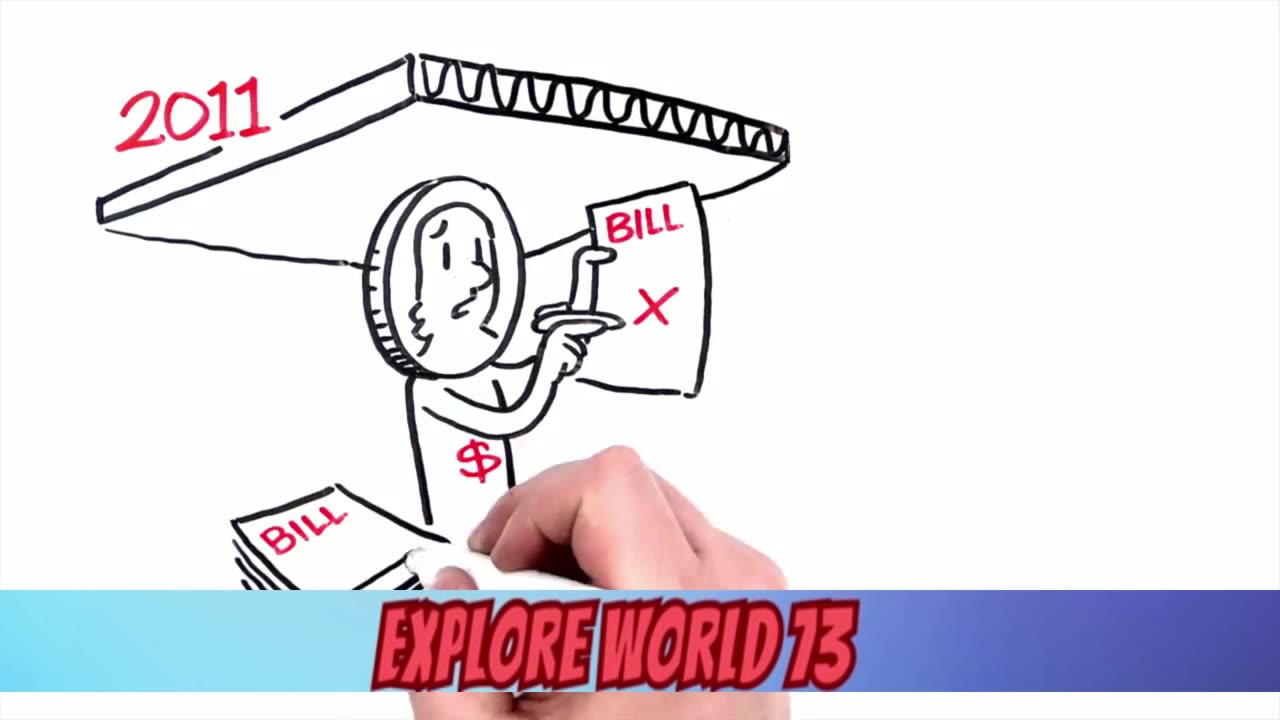Premium Only Content

The Debt Ceiling Explained: Why You Should Care
The debt ceiling refers to the maximum amount of debt that a government can legally borrow. When the debt ceiling is reached, the government cannot borrow more money, which can lead to challenges in meeting financial obligations and disrupt government services. It also affects economic stability, financial markets, credit ratings, and highlights long-term fiscal health. Paying attention to the debt ceiling is important for responsible fiscal management and sustainable economic growth.
"Are you interested in the intricacies of fiscal policy? Dive into the world of #DebtCeiling and its impact on #EconomicStability, #FinancialMarkets, and #GovernmentSpending. Explore the consequences of #BudgetDeficit and #NationalDebt, while considering the significance of maintaining a good #CreditRating. Understand the importance of #FiscalResponsibility and #DebtManagement in ensuring long-term #FiscalHealth. Discover how the #DebtCeiling affects #InvestorConfidence and #MarketVolatility, while contemplating the risks of default and the need for #BudgetReform. Stay informed about ongoing #DebtCeilingDebate and its potential to cause #GovernmentShutdown. Analyze the relationship between #EconomicPolicy and #DebtLimit, and the role of #BipartisanAgreement in finding solutions. Join the conversation on #FinancialStability, #RevenueGeneration, and #SustainableFinances to shape a better economic future."
-
 LIVE
LIVE
BonginoReport
2 hours agoTrump Protects Old Glory in New EO! - Nightly Scroll w/ Hayley Caronia (Ep.119) - 08/25/2025
6,480 watching -
 LIVE
LIVE
The Jimmy Dore Show
1 hour agoSnoop Dogg Is DONE w/ LBGTQ+ Propaganda In Kids Movies! Trump Outlaws Burning the U.S. Flag!
5,101 watching -
 UPCOMING
UPCOMING
Quite Frankly
4 hours ago"Weekend News, All-Time Physical Feats, Mixed Reels" 8/25/25
1.31K1 -
 UPCOMING
UPCOMING
The Mike Schwartz Show
1 hour agoTHE MIKE SCHWARTZ SHOW Evening Edition 08-25-2025
32 -
 1:43:44
1:43:44
MTNTOUGH Podcast w/ Dustin Diefenderfer
16 hours agoEddie Penney: DEVGRU to Single Dad of 3 Overnight | MTNPOD #130
222 -
 1:28:57
1:28:57
Kim Iversen
2 hours agoSomeone Stole Kim's Identity — And Bought a Car! | Dr Drew Pinsky On Sex, Drugs & Censorship
23.4K16 -
 1:07:00
1:07:00
TheCrucible
2 hours agoThe Extravaganza! Ep. 26 (with special guest host Rob Noerr) 8/25/25
54.9K4 -
 7:35
7:35
Tundra Tactical
1 hour agoI Can’t Believe I’m Saying This… 2011’s Are Actually COOL Now?! 🤯
3.1K -
 LIVE
LIVE
Wayne Allyn Root | WAR Zone
4 hours agoWAR Zone LIVE | 25 AUGUST 2025
126 watching -
 LIVE
LIVE
Outspoken with Dr. Naomi Wolf
3 hours ago"CPA/Whistleblower Sam Antar Identifies Millions in Fraud Behind Mamdani Campaign"
137 watching